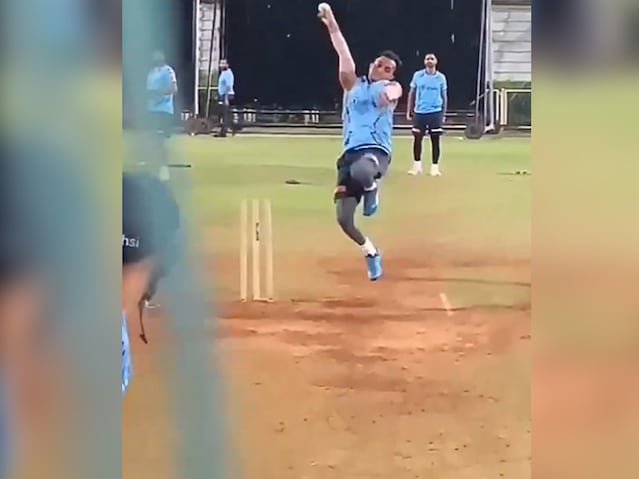
The process of physical demarcation of the Yamuna’s floodplain – a basic step to help identify and protect the sensitive ecosystem from encroachment – is still incomplete despite court orders.
While the Delhi government had claimed in submissions to the National Green Tribunal (NGT) that “100%” physical demarcation of a major stretch of the Yamuna’s floodplain in the city has been done, visits to the sites in question and interviews with officials by The Hindu have confirmed that major gaps persist.
Moreover, nine years after the green panel asked authorities to identify encroachments in the floodplain, this process, too, has not been done, and was not initiated even after the devastating July 2023 floods that saw the Yamuna rise to unprecedented levels. In fact, illegal permanent constructions on the floodplain have only grown since the NGT’s directions in a landmark judgment in 2015, according to latest satellite images.
“Demarcation of a floodplain is not rocket science. If it is not being done despite court orders, it is because of the dishonest intentions of bureaucrats and the government’s Executive wing,” said Shashi Shekhar, former Secretary at the Ministry of Water Resources, River Development and Ganga Rejuvenation. He added that there was a “strong land mafia” that was “grabbing” the floodplain. “This cannot happen without the connivance of officials and politicians.”
Rising encroachment
Encroachment into the floodplain intensified in the 1990s, with several illegal colonies mushrooming on the site. Over the years, multiple developmental projects, such as the Commonwealth Games Village, the Yamuna Bank Metro Station, and the Delhi Secretariat, were also constructed on the floodplain.
After the 2015 judgment in a case filed by ex-IFS officer Manoj Mishra, the NGT formed the ‘Maili se Nirmal Yamuna (From Dirty to Clean Yamuna) Revitalisation Plan, 2017’, with the intent to restore the river’s floodplain to its natural state by March 31, 2017.
The NGT’s judgment, warning of “grave environmental disasters”, had directed the Delhi Development Authority (DDA) – a civic body administered by the Centre – to physically demarcate the entire floodplain, and prohibited any construction in the demarcated area. But the DDA missed the deadline.
‘Demarcation done’
However, from April 2021, the Delhi government, based on the submissions made to it by the DDA, has been claiming in different reports to the Centre and the NGT that physical demarcation of the floodplain has been completed from Wazirabad to Jaitpur. The Yamuna enters Delhi at Palla in the north, and flows through Wazirabad and Okhla. It finally leaves Delhi at Jaitpur in the south.
“100% work for demarcation of floodplain has been completed. 591 bollards marked with GPS coordinates, 375 flag posts, and 27 signboards for the entire stretch from Wazirabad barrage to Jaitpur have been installed,” stated a report submitted by the Delhi government to the NGT on December 12, 2023.
But when The Hindu visited different parts of the floodplain from Wazirabad to Jaitpur, the bollards with GPS coordinates could not be found in many areas.
“The demarcation has been done from Wazirabad to Okhla, but has not been completed from Okhla to Jaitpur. Most of the floodplain in Jaitpur does not belong to the DDA, so to complete the process, we will have to do a joint exercise with the Delhi government,” a DDA officer said on condition of anonymity.
At Batla House, too, the demarcation could not be found except for one bollard. DDA-appointed guards at the site said they had not seen any more bollards. “The physical demarcation has not been completed here due to pending court cases,” another DDA official said.
Potential issues remain unaddressed even in the stretches which are fully demarcated, multiple official sources told The Hindu.
The minutes of a meeting of the Principal Committee – a panel appointed by the NGT to monitor the implementation of its 2015 judgment – on January 14, 2022 show that issues were raised about the demarcation already done by the DDA. “It was pointed out to the DDA that the bollards fixed by them at some areas excluded a large part of the floodplain and a meeting was suggested to discuss that. But the meeting never happened,” said a Central government official. The information was confirmed by a second source.
The NGT’s direction to identify encroachments and suggest recommendations for demolition, too, was left incomplete. “The Principal Committee was supposed to make sure this was done by the DDA, but it never happened,” the official said.
Delhi floods
After the 2023 floods, the NGT took suo motu cognisance of a newspaper report, and formed another committee headed by the Chief Secretary in October last year. The green panel’s directions to the new committee echoed almost exactly what it had told the Principal Committee eight years ago – to physically demarcate the floodplain and suggest measures to remove encroachments.
The new committee was set a deadline of three months, but the deadline was missed. In January this year, the committee asked for three more months to comply with the NGT’s directions.
“It was still proving to be a difficult task to carry out these directions, as the DDA and Revenue Department did not have proper maps of the area in the required format. In fact, some of the Revenue Department’s maps of the floodplain exist in a tattered form,” a Delhi government official said.
On March 21, the NGT directed the Delhi government to demarcate the floodplain keeping in mind the risk of floods that occur once every hundred years. Earlier, demarcation was being done based on a 25-year flood frequency. The green panel’s new direction will result in a much larger area being termed as floodplain.
“We will have to make the maps again, and then demarcate the floodplain,” the official said. “It would definitely take much more time.”
More construction
Even as the new committee struggles to identify and remove encroachments in the floodplain, several new constructions could be seen in Jaitpur, New Usmanpur and Garhi Mandu. At Jaitpur, there were hundreds of illegal constructions which stretched even beyond the Delhi border.
A comparison of the current satellite images of the areas with ones taken years ago show that even after the 2015 judgment, more and more areas of the floodplain have been lost to encroachment in the form of permanent constructions.
A shopkeeper at Jaitpur said the change had happened right before his eyes. “When I started living here 20 years ago, there were only five or ten houses on the other side of the road, on the floodplain. But over the years, a whole colony has developed there. Construction can happen if you pay money to the right people,” he said, his voice trailing off.





